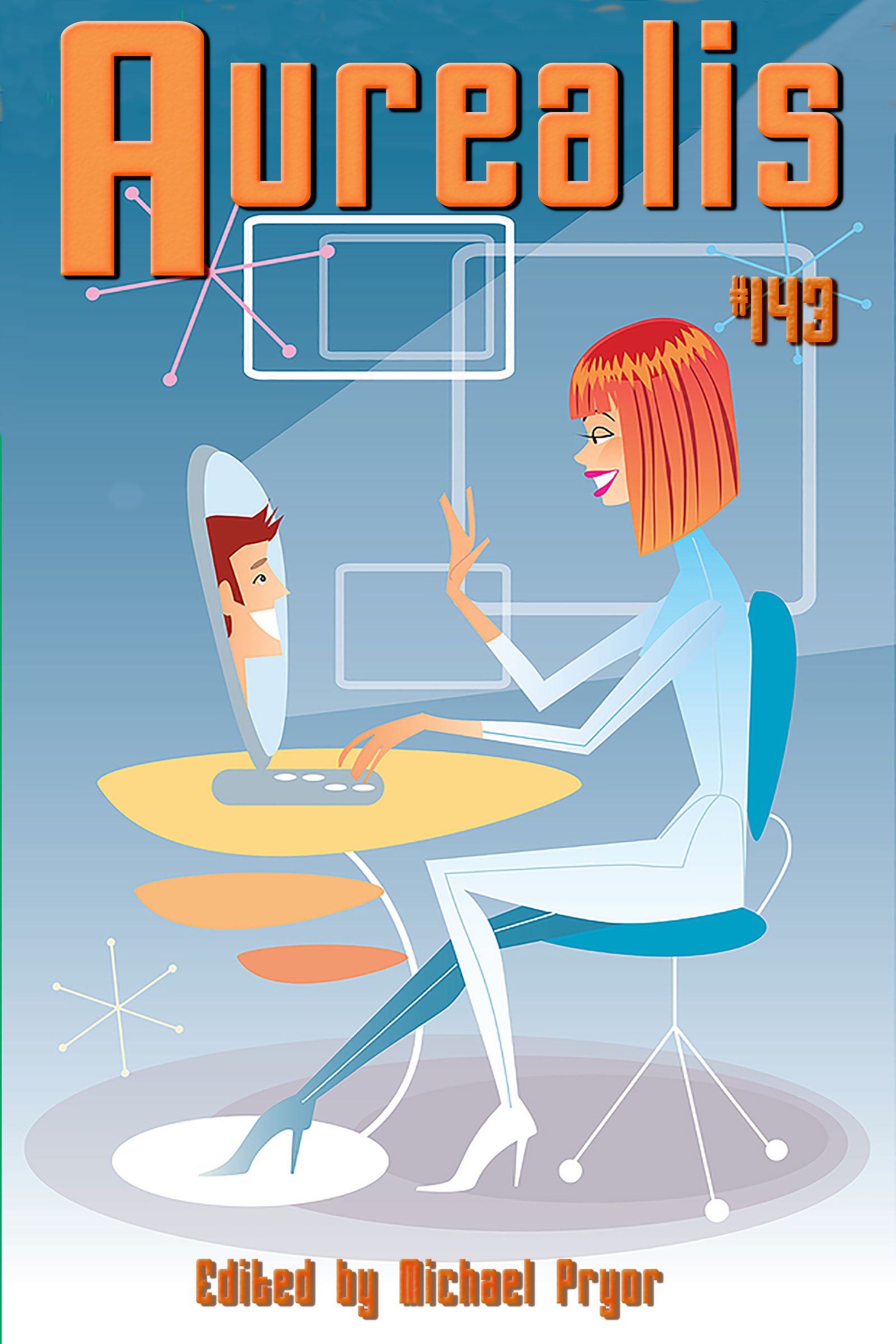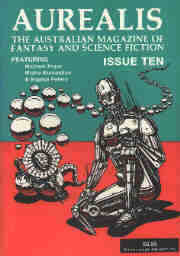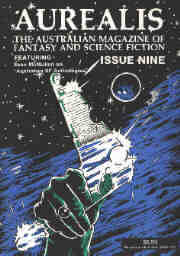Aurealis #143
$3.99
Aurealis 143 brings you stories from Ron Schroer, Jenna Cosgrove and Hristo Goshev. We also present absorbing non-fiction from Amy Laurens, Gillian Polack and Claire Fitzpatrick’s analysis of the works of David Cronenberg, plus extensive reviews and jaw-dropping internal art. Aurealis – a multitude of worlds in every issue.
- From the Cloud — Michael Pryor
- Pig Headed — Ron Schroer
- Impulsion — Jenna Cosgrove
- Imago et Umbra — Hristo Plamenov Goshev
- Werewolves: Liminality, Power and Transformation Throughout History — Amy Laurens
- Using the Anthropocene to Reinterpret the Importance of Lost Race Novels in Early Australian SF — Gillian Polack
- Metaphor and the Body in the Works of David Cronenberg — Claire Fitzpatrick
In recently revisiting Star Trek: Voyager we encountered an episode where the Vulcan science officer, T’Paal, has contracted a disease that is potentially fatal. It is slow, but mortality is very high. She’s reluctant to seek treatment because the disease is a shameful one, usually only contracted by a certain section of the Vulcan community. This sub-group of Vulcans is held in contempt by the majority of Vulcans because of their ‘immoral practices’, the practice of intimate telepathic contact known as the ‘mind meld’, which is actually the vector for spreading the disease.
Little research is being undertaken into curing the disease, and treatments are withheld from the ‘unacceptable minority’ because otherwise it would be condoning them.
To complicate matters, T’Paal contracted the disease when she was forced into a mind meld. If she reveals this to Vulcan medical authorities, she will be entitled to what treatment there is.
She refuses to reveal this on a matter of principle. The authorities withhold treatment, assuming she is one of the minority. One of the board, however, outs himself as a member of the minority, reveals the truth of T’Paal’s plight and wins treatment for her, resulting in his own disgrace and banishment.
A transparent enough story paralleling HIV sufferers, and while this episode is almost routine speculative fiction, it highlights a thoughtful theme that runs through much of the genre: SF and Fantasy often examine the plight of minorities, the dispossessed, the disenfranchised, using the convenient distance of other worlds/realities as a narrative cloak.
Modern SF has a strong tradition of championing unpopular causes, with an eye on social justice. Peter Nichols in The Encyclopedia of Science Fiction notes ‘Because it was deemed socially insignificant, SF could play host to political and social criticism of a kind which might elsewhere have attracted the attentions of Joseph McCarthy (1909–1957) and his Un-American Activities Committee’.
Any SF or Fantasy text that deals with ‘the other’ is a covert grappling with the notion of them and us. The ‘us’ is often starkly different, thanks to the touchstones available to the SF or Fantasy author, but as such often highlights issues in ways that are not apparent initially.
What happens here has much to do with the central SF device of the conceptual breakthrough. Usually, the conceptual breakthrough is experienced by characters in a book, where a paradigm for their existence is changed by the acquisition of knowledge. The classic example is where the world proves to be not what it seems. Think The Matrix where reality proves to be a computer construct, or Brian Aldiss’ Non-Stop where the world turns out to be a generation starship on its decades-long voyage between the stars.
In a reader sense, the conceptual breakthrough comes when the reader realises that what they’re reading isn’t really about aliens at all, or robots, or mutants—it’s about us.
Sometimes, the slightly distancing effect SF and Fantasy has from the issues of today can be useful when dealing with these very same issues and allows a subtle, thoughtful examination of sensitive areas.
All the best from the cloud!
Michael Pryor
From Pig Headed by Ron Schroer:
My first sighting of Pig Man goes like this:
I was rounding a turn on the Clyde, not long after Pooh’s Corner. Anyone who knows the twists and turns of Clyde Mountain knows Pooh’s Corner, which—yes—is all about teddy bears, not pigs. You’ll see it on the way down the Clyde, on your way to Batemans Bay and the South Coast. There’s a sharp turn and a little cave in the rock face there, more of a grotto I suppose. Sometimes there are just a few, and other times the cave is filled with bears of many shades and sizes, and not just Winnie. Any bear will do. They’re like furry little sacrifices to some obscure mountain god.
From Impulsion by Jenna Cosgrove:
Searchlight Scientific Vessel
1448 days from Earth
It looked like a body, the blurred shape that collided with the front of the ship.
I knew it couldn’t be, of course. A human body out there in that shimmering pool of stars, floating in front of the first vessel that had ever made it to this far-flung sector? The idea was absurd.
From Imago et Umbra by Hristo Plamenov Goshev:
Strain as I might to make out anything in the darkness stretching before me, it remains as uniform and impenetrable as ever. Space always looks strikingly gorgeous when viewed from an observatory or as a digital projection, but from the cockpit of a fighter, that’s another story. The vibrant nebulae and radiant quasars vanish, replaced by a bottomless abyss with but a few tiny dots of light to disrupt its homogeneity. This no longer disturbs me—at least not like it did while I was still a cadet at the Deneb Military Academy a lifetime ago—but it still feels a bit unfair. Pilots deserve some of that magic too.
From Werewolves: Liminality, Power and Transformation Throughout History by Amy Laurens:
With a history even further-reaching than that of vampires, werewolves are perhaps the ultimate paranormal creature. While there are stories of shapeshifters in practically every culture on every continent, the werewolf, as a specific subset of shapeshifter, has endured in fame and popularity throughout literal millennia. But why is this? What is it about the notion of a human transforming into a wolf that has long fascinated us, giving this mythical creature life enough to endure throughout the ages?
From Using the Anthropocene to Reinterpret the Importance of Lost Race Novels in Early Australian SF by Gillian Polack:
Fiction has a role in creating the Anthropocene. Fiction can communicate a vision of how the Earth is changed by humans and which humans are seen as making significant changes to the planet. Australia’s Lost Race romances, for example, heralded the current view that we live in the Anthropocene. Tracing them back, we find that the Anthropocene may be a bit different in Australia.
From Metaphor and the Body in the Works of David Cronenberg by Claire Fitzpatrick:
In 2014, Canadian film director David Cronenberg turned 70. When interviewed by The Guardian, he compared himself to Gregor Samsa, the protagonist of The Metamorphosis by Franz Kafkta, who wakes up one morning to find—very Cronenbergian—he’s become a giant beetle.





